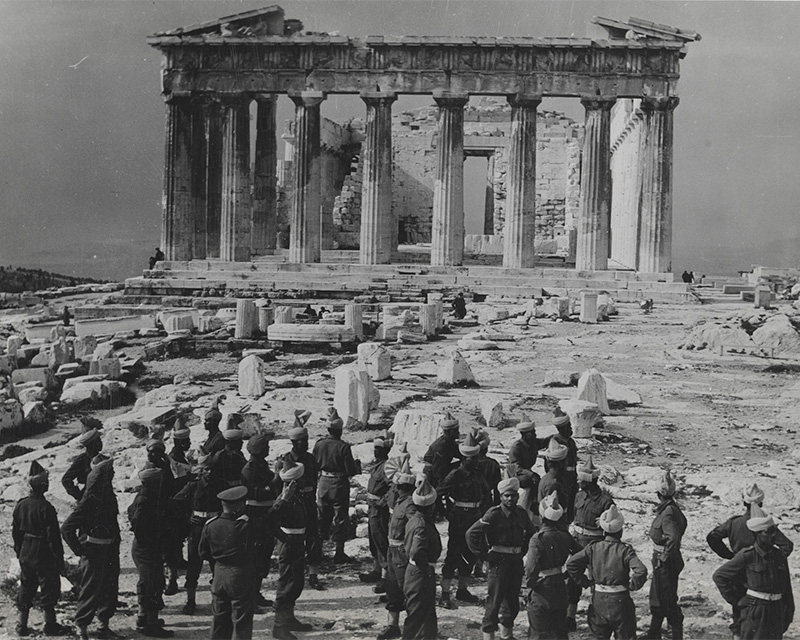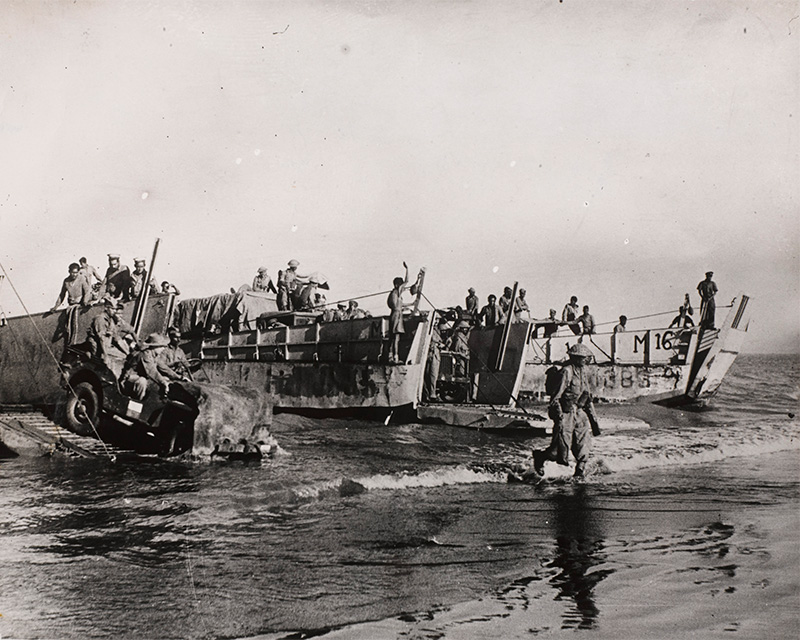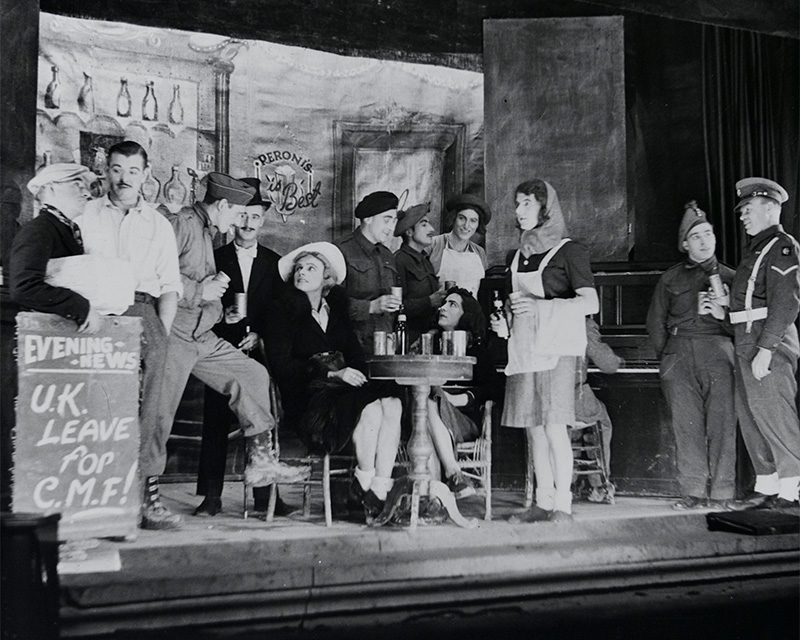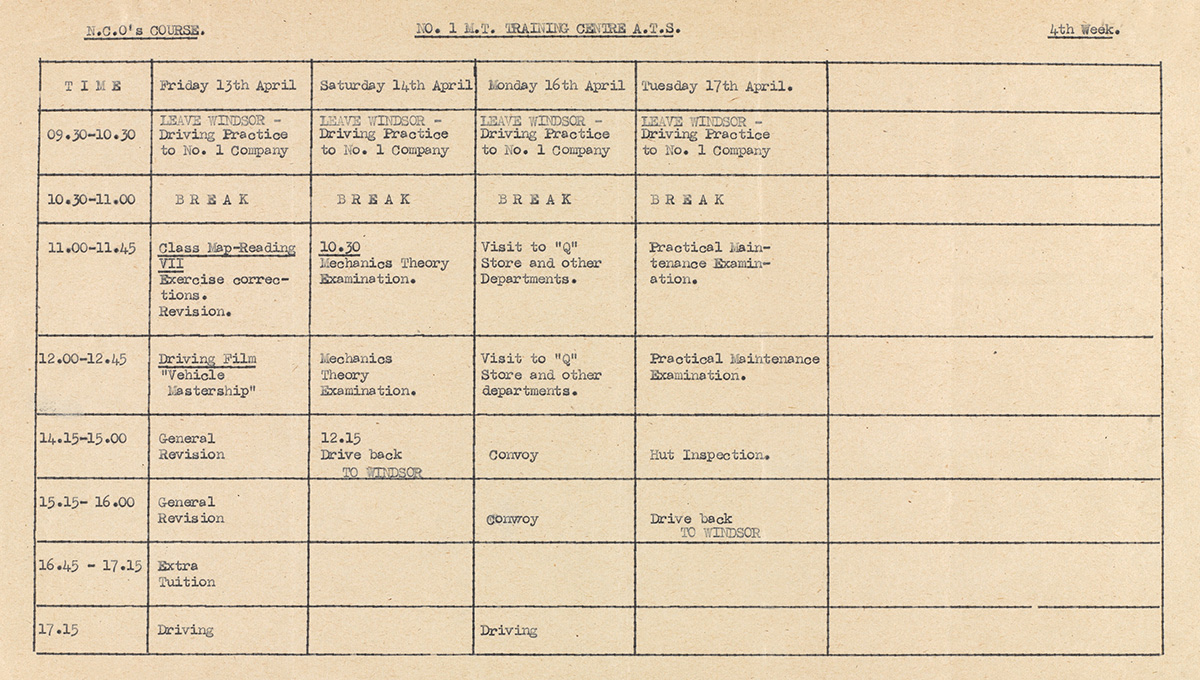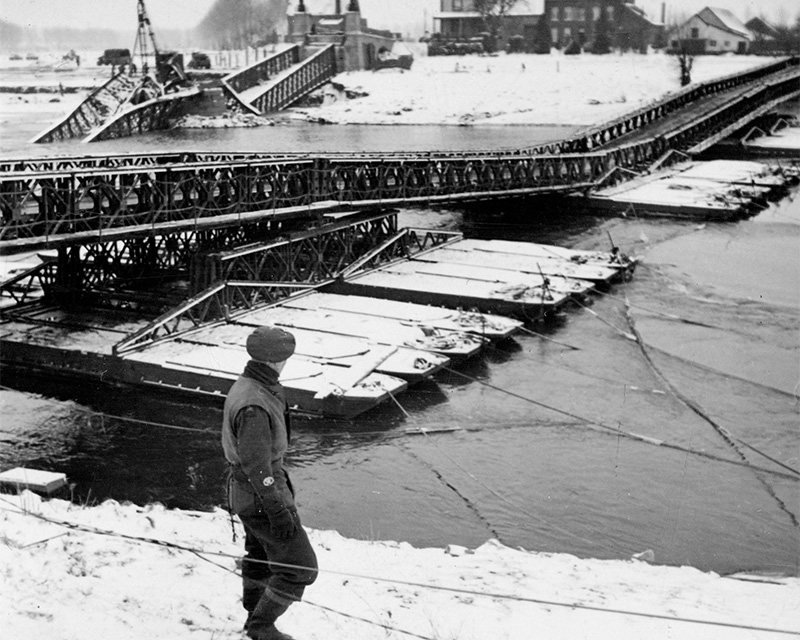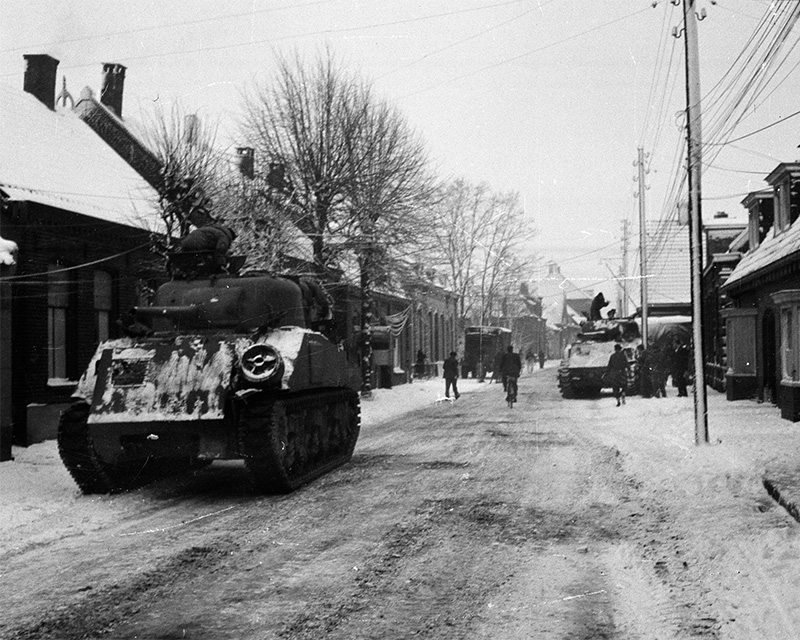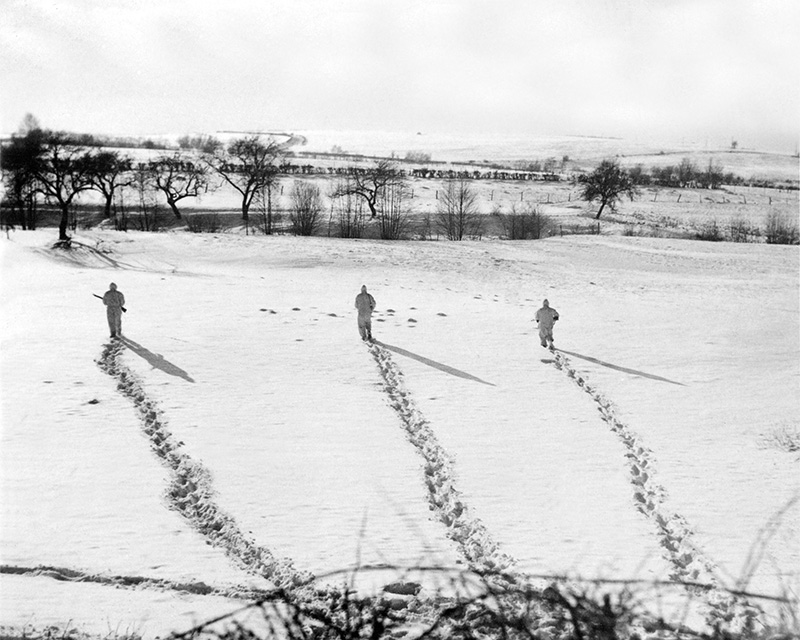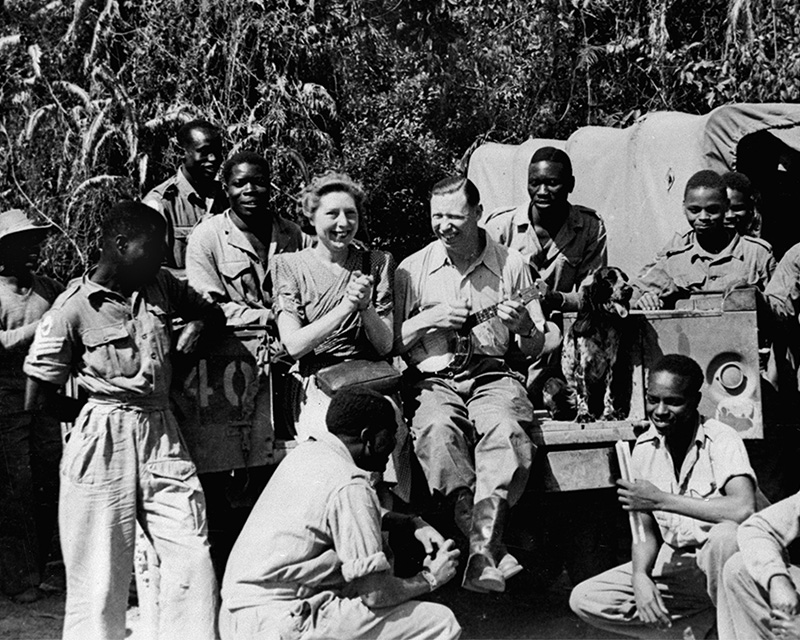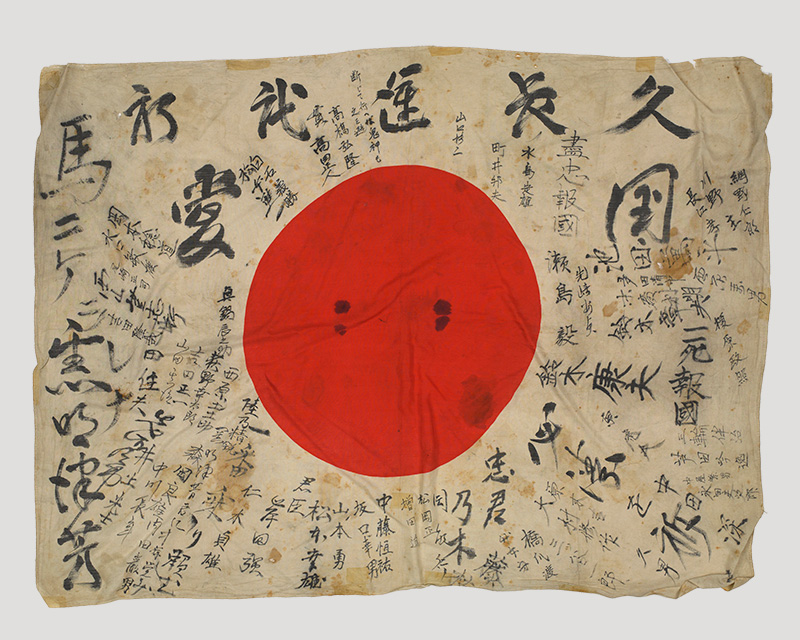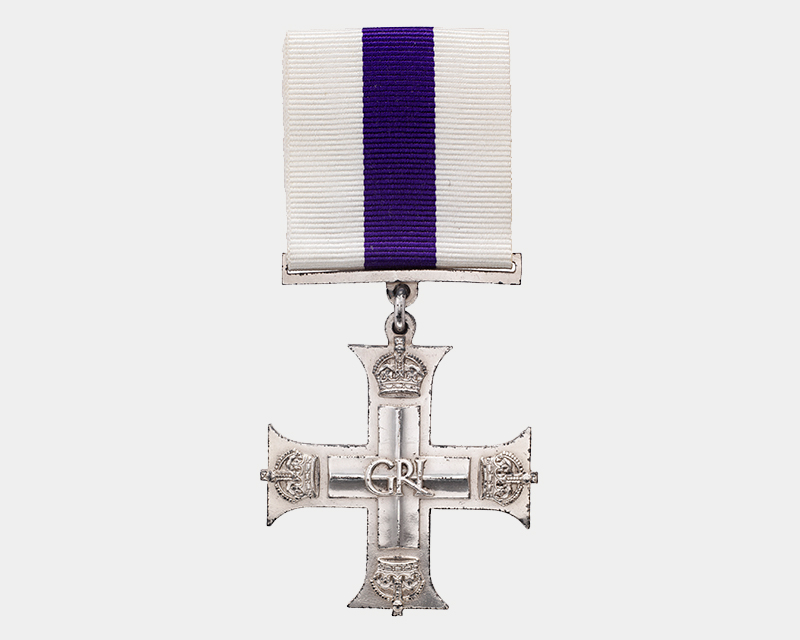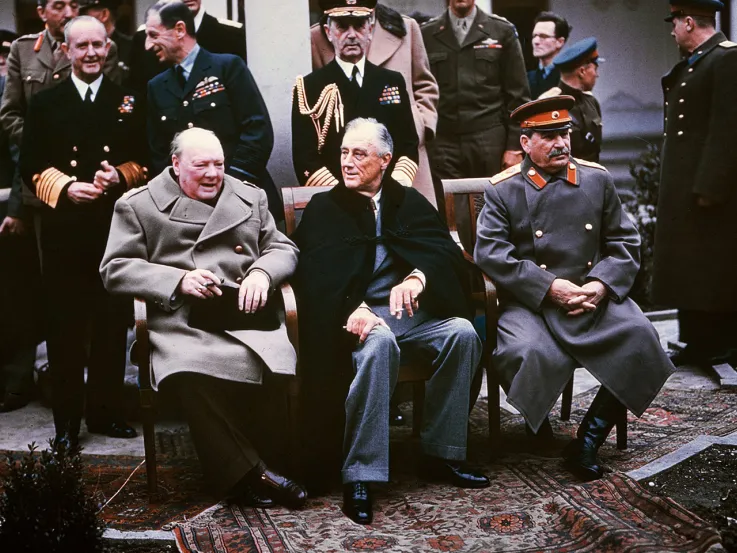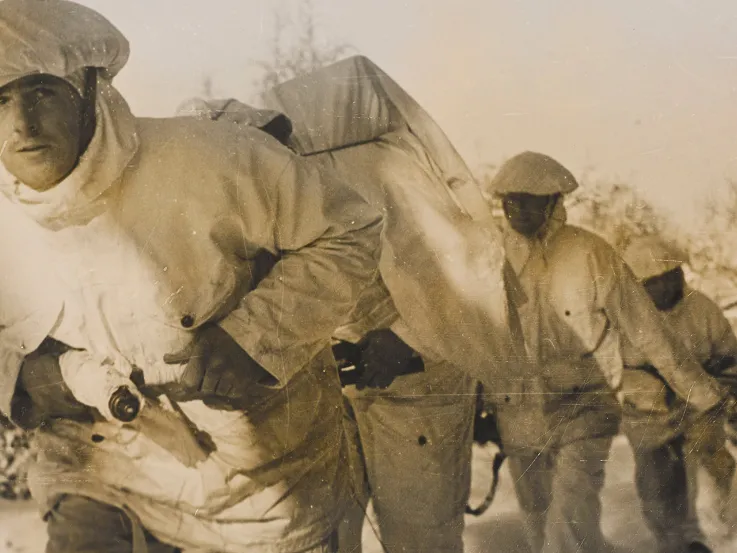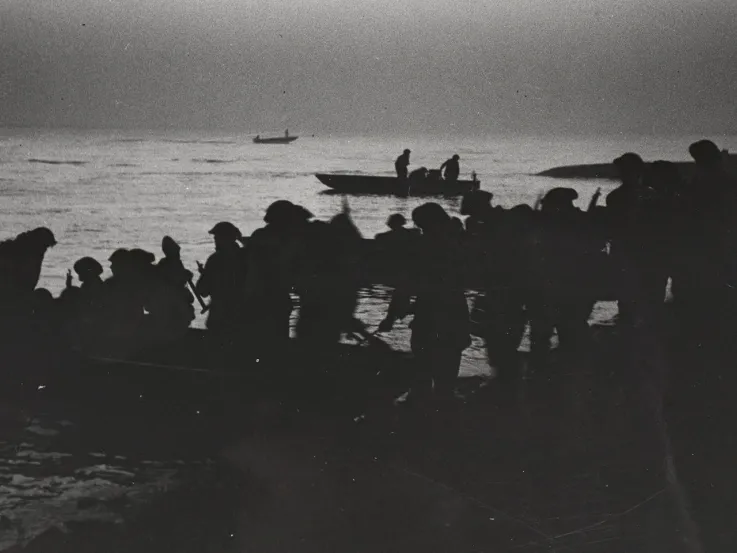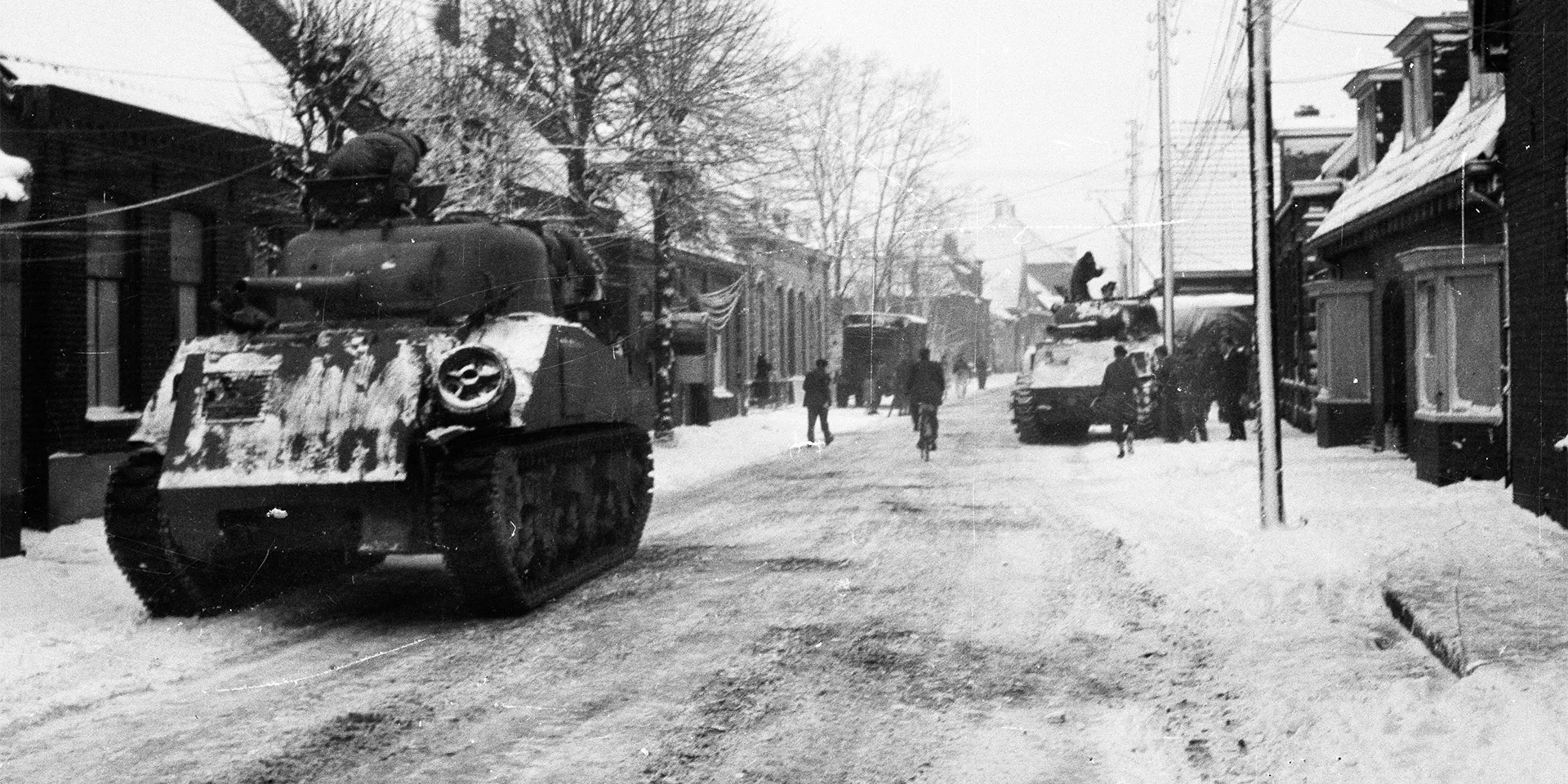
State of affairs
By January 1945, the Second World War was nearing an end. The previous autumn, German forces had launched what would be their final major offensive in North-West Europe, the Battle of the Bulge. A fierce US-led Allied defence held the line and set the stage for a counterattack.
The vast assemblage of men and women who made up the British Liberation Army advanced in lockstep with their American allies through Belgium and the Netherlands towards the German border. With the rapid progress of Soviet forces in the East, the final defeat of Nazi Germany was closer than ever.
In Italy, the difficult winter conditions had temporarily stalled the Allied advance, and British soldiers were forced to wait until spring before they could push north. A total victory was, however, all but assured.
In eastern Asia, an Allied offensive in the Pacific had put Japan on the defensive. Now, a British fightback against Japanese forces in Burma was under way. Across all fronts, it seemed only a matter of time before the final defeat of Axis forces would be achieved.
It was fast becoming clear, however, that military victory alone would not resolve the manifold uncertainties and problems facing the world in 1945. In Greece, the retreat of the German occupiers instigated a proto-civil war that led to the intervention of British troops. Meanwhile, on the Eastern Front, Soviet soldiers began to uncover shocking evidence of Nazi atrocities that invoked a widespread demand for justice.
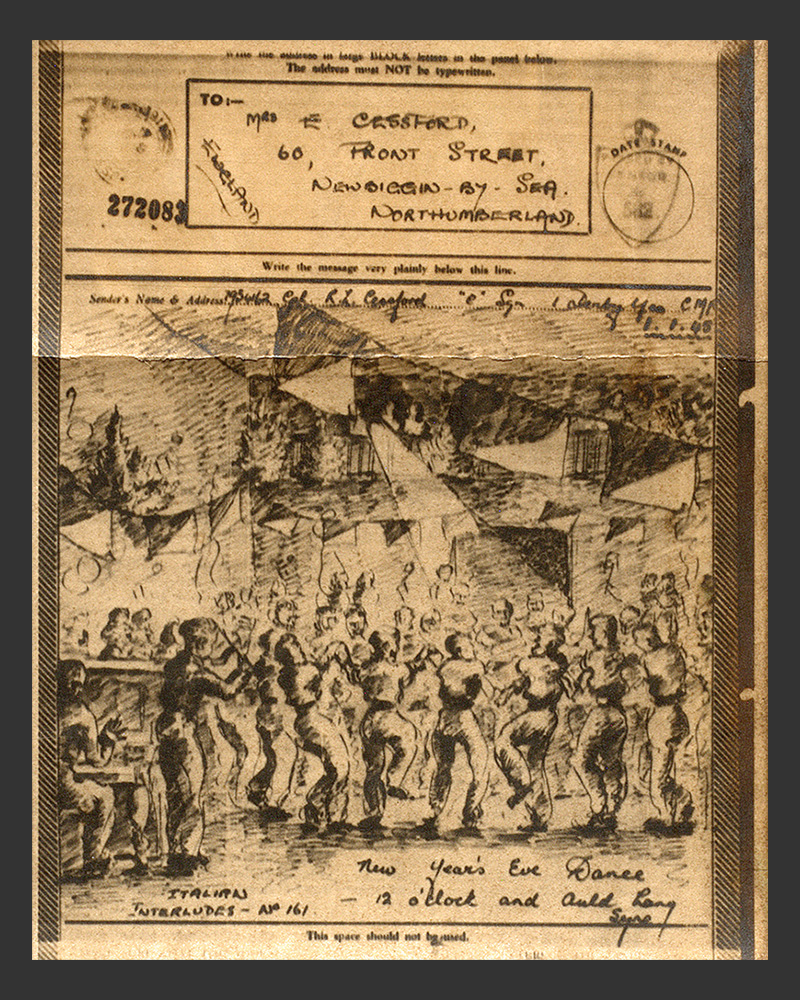
New Year on the Italian Front
1 January 1945
This airgraph, illustrated and sent home by Corporal Robert Cessford of the 1st Derbyshire Yeomanry, depicts servicemen at a New Year’s Eve dance in Italy singing 'Auld Lang Syne' together at the stroke of midnight.
Over the previous two years, British soldiers had seen fierce fighting through North Africa and Italy, including at Monte Cassino. Now, as 1945 began, they rested up in Italy awaiting orders for a final advance against the remaining German forces to the north.
‘This time I saw the New Year in very quietly not like last year. One of the girls here had had two very small bottles of champagne given to her and we sat up in bed drinking it. It just tasted like cider to me. I spent the evening by going to Church & then sat in the canteen singing hymns.’Private Audrey Hayward, Auxiliary Territorial Service, Wales — 7 January 1945
Indian troops in Athens
When the Nazi occupation of Greece ended in October 1944, it left a power vacuum. This prompted a series of clashes between the left-wing resistance groups who had fought against the Germans and the returning Greek government-in-exile. Britain sent soldiers, including Indian Army troops, to support the government forces.
The photograph above shows a group of soldiers of the 5th Indian Infantry Brigade touring the Acropolis in Athens.
‘Leave to the United Kingdom started on 1st January and is now running smoothly though the allotment per month is, of course, very small. Some officers, we understand, arrived back in the United Kingdom extremely exhausted from having to walk between trains and boats, or aeroplanes and Customs Houses, rather overweighted with bottles of Champagne which they were taking back in the hopes of increasing their popularity with their families or others.’War Diary, Grenadier Guards — January 1945
Battle of the Bure
3-5 January 1945
On 3 January 1945, Allied forces including British XXX Corps and the 6th Airborne Division counterattacked against German forces in Belgium. The previous autumn, the German Army had launched its final offensive in the West, the so-called Battle of the Bulge. After weeks of heavy fighting, Allied forces emerged victorious.
‘It is pleasant to be back in Belgium after the flat dullness of Holland… Buzz bombs and such like are, I know, very common in the South of England, but this area had been our first experience of them. A great number have passed over us but, I am glad to say, that a very few came down anywhere near us.’War Diary, 2nd (Armoured) Battalion, Grenadier Guards — 2 January 1945
XV Corps lands at Akyab
3 January 1945
In late 1944, British forces had embarked on an offensive in Burma (now Myanmar). On 3 January 1945, British troops arrived at Akyab (now Sittwe) where they faced little resistance. The landing supported a general advance that month as British and Indian Army troops pushed through central Burma towards the capital Rangoon (now Yangon).
‘On the 7th January 1945 my turn came for exchange to the Middle East and I gladly went… I left at 3 o’clock in the morning and the Regimental Sergeant Major came up to see me off. I thought that very decent of him as it was a bitter cold night. He gave me some lemonade and biscuits for the journey.’Sergeant Edmund Mitchell, Corps of Military Police — January 1945
Forces of the British Empire in 1945
Britain was at the centre of a vast empire spanning the entire globe. It included military front lines and strategic strongholds, as well as colonial outposts far from the fighting.
The British Army, alongside imperial forces serving under the Crown, was deployed around the world in the defence and maintenance of the British Empire. Yet there were growing demands for decolonisation from independence movements across several continents.
‘After a lot of time spent in hanging about we eventually moved off about 1000 hours. We only had about 18 miles to go, but it was a pretty deadly journey, with ten of us in the back of a 15CWT [a light military truck], over a really wicked road. We eventually reached the unit about 1400 hours… I had a nice hot shower at a mobile bath unit and then put some clean clothes on, the first since Xmas.’Signalman Walter Shearer, Royal Signals, Burma — 10 January 1945
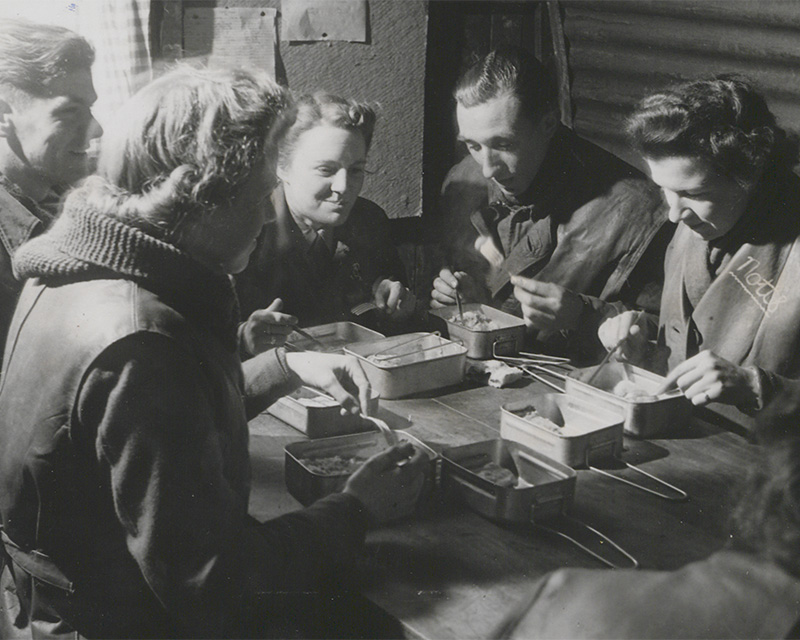
Auxiliary Territorial Service in Belgium
11 January 1945
After its formation in 1938, the Auxiliary Territorial Service (ATS) tasked women with numerous vital roles in the war effort in all theatres of conflict. Here, members of a mixed heavy anti-aircraft unit enjoy a meal together inside a Nissen hut.
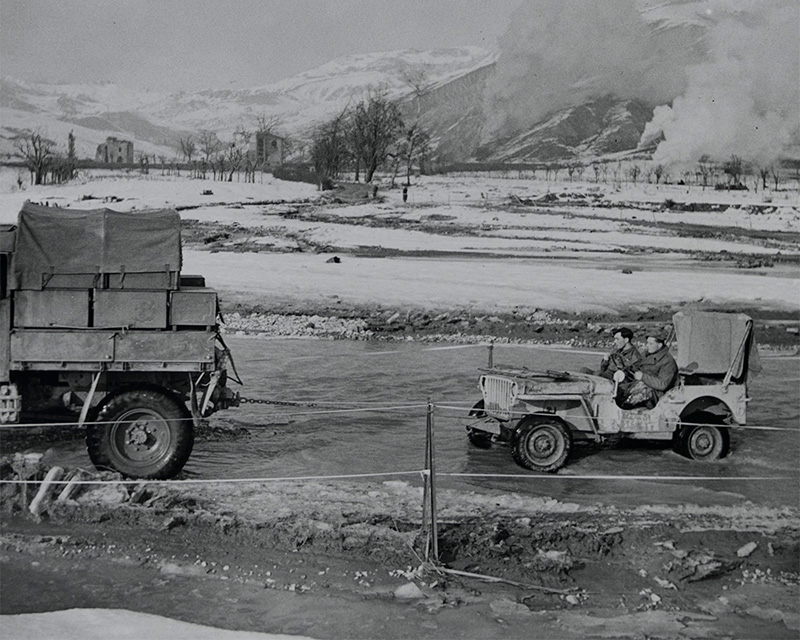
Snow on the road
After breaching the Gothic Line in 1944, poor weather conditions hampered the advance of Allied troops in Italy until the following spring. This photograph shows a truck towing a jeep out of the Sillaro River.
‘At one o’clock in the morning... I arrived at the Re-allocation Centre, a camp near Baiano not far from Napoli... I was still a Grenadier Guard, nothing could change that, but my fighting days were over.’Guardsman SH Stephens, Grenadier Guards, Italy — 12 January 1945
Princess Elizabeth joins the ATS
19 January 1945
As the war entered its final months, there was still a growing need for new personnel to perform key duties at home and abroad. On 19 January 1945, Princess Elizabeth (later Queen Elizabeth II) began her training with the ATS, learning drill, physical training, practical mechanics and driving.
The timetable above is from a course she attended at an ATS training centre in Camberley, not far from Windsor Castle.
The British Liberation Army
In the second half of January, Allied troops drove across Belgium and the Netherlands. In snowy conditions, soldiers crossed the River Maas and fought to clear retreating German forces from the Roer triangle.
Along the way, British forces liberated numerous towns, including St Joost on 21 January. The stage was now set for an attack on Germany itself.
Battle of Hill 170
22-31 January 1945
The British 3rd Commando Brigade was tasked with taking the Arakan region (now Rakhine State) in Burma. The Battle of Hill 170 was the climax of the Arakan operations and secured an Allied bridgehead in the region.
‘It is something to know that they are at last making progress in Burma.’Private Audrey Hayward, ATS, England — 31 January 1945
Japanese good-luck flag captured on Ramree Island
When signing up for wartime military service, or before deploying overseas, Japanese soldiers were often presented with personalised flag mementoes by their families and friends. Known as 'yosegaki hinomaru', these flags became a common trophy for British soldiers advancing through Burma in 1945.
ATS soldiers travel to Belgium to join the British Liberation Army
Members of the ATS, serving in mixed heavy anti-aircraft regiments, travelled from the UK to Ostend in Belgium. They were to join up with the British Liberation Army in preparation for the invasion of Germany. In the photograph below, the soldiers receive a warm welcome from local children upon their arrival in Belgium.
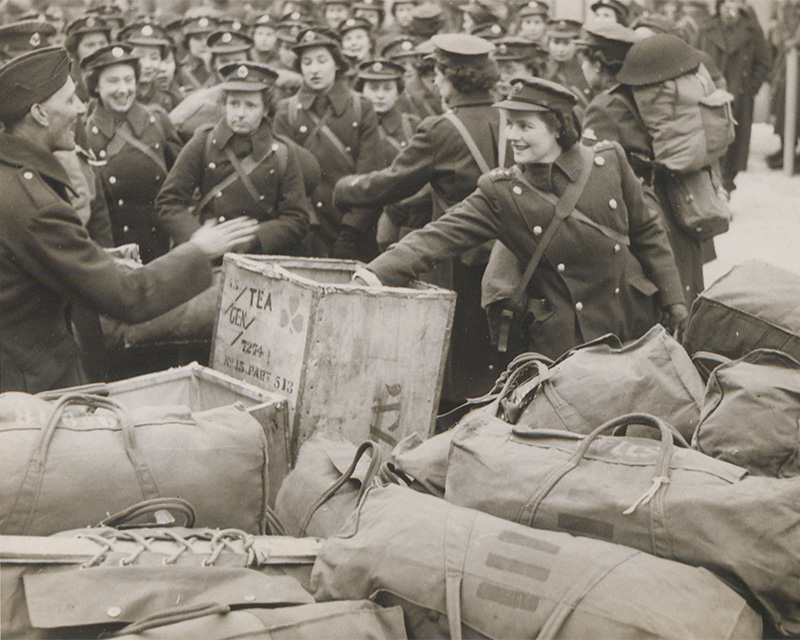
ATS soldiers on their journey to Belgium
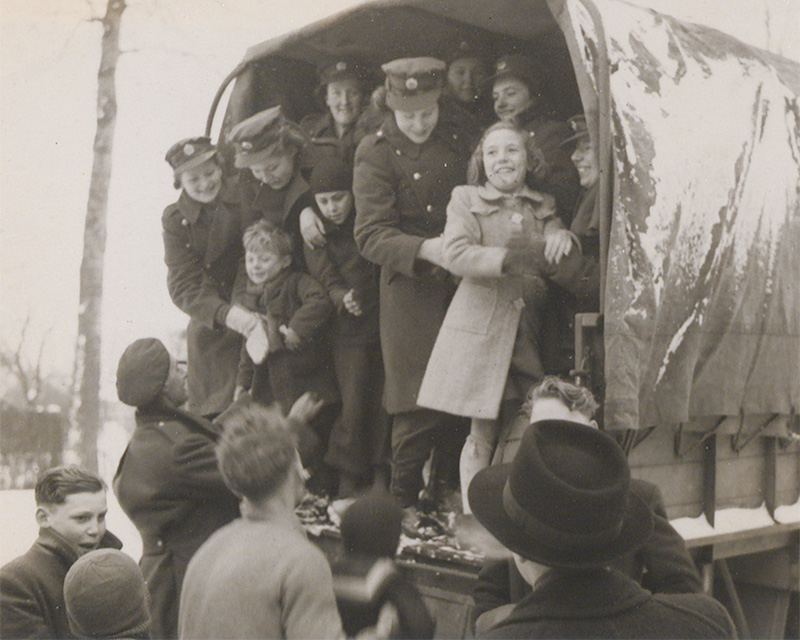
Locals greeting the ATS upon their arrival in Belgium
Soviet soldiers liberate Auschwitz
27 January 1945
As they continued their advance from the East towards Germany, Soviet soldiers uncovered evidence of the Holocaust. On 27 January, troops of the 60th Army of the First Ukrainian Front liberated the Nazi concentration and extermination camp at Auschwitz-Birkenau in occupied Poland. This date is now marked annually as Holocaust Memorial Day.
‘One of the coldest days I’ve known. Snowing & a bitter wind. Snow blowing in the workshops & through the roof. Might as well be in the open except sheltered from the wind, everything covered with snow… News that the Russians are 100 miles from Berlin & still going strong. Can’t last much longer. Might not get my leave in 2 weeks time.’Private Cecil May, Royal Army Service Corps, Belgium — 30 January 1945
On This Day: 1945
This is the first instalment of a new series exploring the British Army's role in 1945 - one of the most decisive years in modern history - drawing upon the National Army Museum's vast collection of objects, photographs and personal testimonies.
Throughout 2025, a new instalment will be released each month that focuses on events from 80 years beforehand. The series will highlight the everyday experiences of Britain’s soldiers alongside events of grand historical significance.

